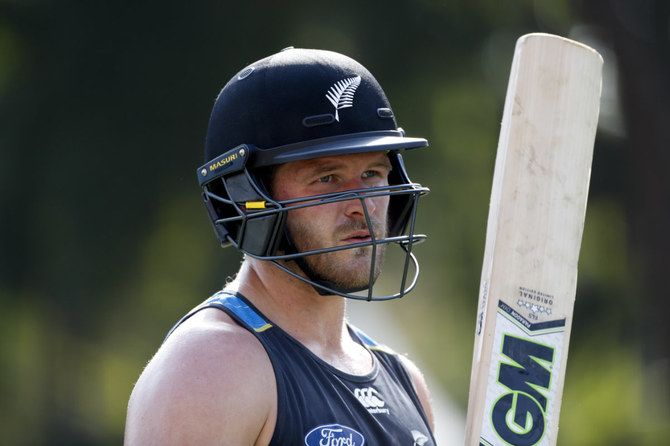NEW YORK: The US cricket team which will co-host the Twenty20 World Cup may be a fitting cross-section of its country as a roster of migrants, a melting pot of nationalities and cultures.
The 15-man squad includes players born in India, Pakistan, New Zealand and South Africa. Home-grown players include vice-captain Aaron Jones, who was born in Queens, and allrounder Steven Taylor, of Hialeah, Florida.
The team provides a snapshot of US cricket at this formative stage, as Major League Cricket jostles for its place in a crowded sporting market. The squad includes foreign players drawn to America by the MLC and local players given the chance to play cricket at a professional level in the United States
The home team’s most recognized member is the former New Zealand allrounder Corey Anderson. The 33-year-old Anderson played 13 Tests, 49 one-day internationals and 31 T20 internationals for New Zealand between 2013 and 2018 in a career limited by injuries.
He earned a place in cricket history for his 36-ball century in a one-day international between New Zealand and the West Indies on New Year’s Day, 2014. Anderson also has played in T20 leagues in Australia, India, the Caribbean and UAE before finding an MLC home at the San Francisco Unicorns.
Anderson made his first half-century for the US in their T20 win over Canada last month.
Mumbai-born Harmeet Singh, who played for India at two Under-19 World Cups, was the star for the 19th-ranked US team earlier this week in an upset win over Bangladesh. It the only the second win over a full ICC member for the US
He scored 33 from the 13 deliveries he faced and shared an unbeaten, match-winning 62-run partnership with Anderson, who was unbeaten on 34.
“It means a lot to us to put on a show against Bangladesh. We are no walkovers,” Harmeet told ESPNcricinfo. “I think our potential is immense.”
The US meet Canada in the tournament opener on June 1 and then there’ll be a step up for both teams in Group A, which also includes India and Pakistan, fierce cricket rivals with enormous support, and Ireland.
Among the other foreign-born players on the US squad coached by ex-Australia batter Stuart Law is right-arm fast bowler Ali Khan, who moved with his parents from Pakistan to the US when he was 18.
He first played for the US team in 2016 and has also has played in the Indian Premier League, Caribbean Premier League and Pakistan Premier League, in Global T20 Canada and the Afghanistan Premier League.
Captain Monank Patel, a wicketkeeper-batsman, was born in India and settled in New Jersey after moving permanently to the US in 2016. He played at a junior level for Gujarat in India and played the first of his 47 one-day internationals and 23 T20 internationals for the US in 2019.
Andries Gous, another wicketkeeper-batsmen, was born in Welkom, South Africa, played for South Africa at under-19 level and played 60 first-class matches before relocating to the US in 2021. He and Patel were the highest scorers for the US in the recent five-match series against Canada.
Allrounder Milind Kumar is another India-born player who accumulated nine centuries in 60 first-class appearances for Delhi before making his home in the US
The Canada team scheduled to meet the US in the opening match is also a team drawn from many places and shaped by the evolution of a professional league at home.
Canada will be led by the veteran left-armer spinner Saad bin Zafar, who was born in Pakistan. He moved to Canada to study and was first named in the Canadian T20 team in 2008. Now 37, he has played 38 T20 internationals and once took two wickets without conceding a run in four overs in a T20 against Panama.
Jamaica-born batter Aaron Johnson, Pakistan-born left-arm fast bowler Kaleem Sana and Guyana-born right-arm quick Dillon Heyliger reflect the international makeup of the team which is coached by former Sri Lanka international Pubudu Dassanayake.


























